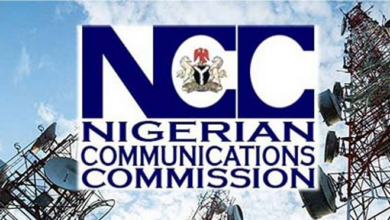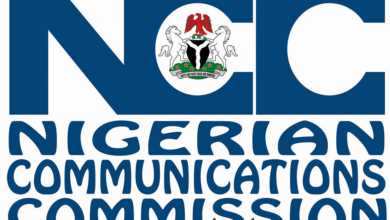How Is Africa Positioned As A Destination For Data Centres? (2)

Part 1 was published on Tuesday
Case Study
Databridge
Databridge is a pan-African provider of data centre (DC) services that operate via telecommunications operators and cloud service providers through carrier-neutral centres. A founding member of the Africa Data Centres Association, the group is Payment Card Industry Data Security Standard-certified. It has operations in Côte d’Ivoire and Benin, and hosts all West African telecoms operators and several international carriers.
Databridge constructed Côte d’Ivoire’s first Tier-3 DC facility, which is internationally certified for information security. The group works to enable professionals in electronic, credit card and debit card payments to streamline the accreditation process.
This has driven demand, as well as work with companies in sectors such as telecoms, cloud, media and finance that require critical infrastructure, as well as hosting and interconnection services. The DCs in Côte d’Ivoire and Benin are connected to four subsea cables that link Africa to other continents. The density of connectivity in West Africa allows customers to interconnect directly with the provider that matches their price and performance needs. Looking to the future, countries in West and Central Africa will develop internet and DC infrastructure quickly due to each market’s proximity, supported by the cloud.
Viewpoint
Patrice Tano, Group COO, Databridg
While the international data centre (DC) industry has grown significantly in recent years, only 1.3% of its facilities are located in Africa. Conversely, the continent is projected to have 1bn internet users before 2025. This has made the continent an attractive option for hyperscale providers such as Google, Amazon, Facebook, Apple and Microsoft.
Africa has been able to recover from the Covid-19 pandemic, with positive GDP growth projected for 2021. This has helped the continent accelerate its industrial and technological development. The arrival of new submarine cables to the African coasts will offer hyperconnectivity opportunities to telecoms operators and DCs. This will facilitate future growth, with the African DC market forecast to be valued at $3bn in 2025.
Cloud service providers will benefit from the rapid development of DC facilities on the continent, and will be able to offer customers better connectivity and data security.
DCs played an key role in the response to the pandemic by facilitating connectivity and the exchange of information via videoconferencing platforms. Indeed, applications such as Zoom and Microsoft Teams have increased their user base by over 44m individuals since April 2020, when much of the world shifted to remote work. The pandemic underscored the fact that companies must adapt their digital processes and expand their digital reach in order to connect with customers. Africa has a large, youthful consumer base and is an attractive proposition for operators looking for opportunities.
While the DC industry has matured relatively slowly in developing markets such as those in Africa, the continent has been given the advantage of learning from the first mover – more developed countries with established infrastructure. As a result, new players looking to enter the African market are able to easily build facilities that meet international standards. Africa can and will get ahead of other regions that are struggling with old and obsolete technological infrastructure. The continent can quickly adopt new technologies.
As Africa’s DC infrastructure nears maturity, digital advancement could bolster other economic segments and greatly benefit local businesses. With supportive legislation that governs the activities of DCs and private cloud solutions, the best-equipped countries will be able to meet the growing demand for hosting data in local or sub-regional DCs. This is particularly the case in Côte d’Ivoire, where a new digital economy is emerging. Databridge aims to leverage its experience to establish itself across the Economic and Monetary Community of Central Africa and the West African Economic and Monetary Union.
Growth Potential
Analyst estimates for the growth of the DC market in Africa are based on a confluence of driving factors, not least a rapidly growing population.
The UN forecasts that more than half of the global population growth between 2020 and 2050 will occur in Africa. The sub-Saharan population is estimated to double over the next 30 years to 2.5bn, led by Nigeria, which will overtake the US as the world’s third-most populous country. The organisation also predicts that more than half of Africa’s population will live in cities by 2040, eight of which will be mega-cities of 10m-plus inhabitants. Presently, 15 African countries have economies and populations large enough to develop DC and cloud service ecosystems.
Some 40% of the African population had access to the internet in 2019. This figure is set to increase by 11% over the next decade, when Africa is estimated to account for around 16% of the global internet user base. The rise in internet uptake is expected to foster an increasingly digitised African economy.
The internet economy is projected to be worth $180bn by 2025, growing to $712bn by 2050.
Meanwhile, data sovereignty regulations demanding that data is stored in-country, or at least within the five sub-regions that partition the continent, will help drive demand for localised data storage services. Research company International Data Corporation estimates that annual cloud computing subscriptions in South Africa alone will grow from $370m in 2019 to $1.7bn in 2024.
Indeed, governments themselves are increasingly driving demand for DC capacity. Senegal, for example, will transfer all government data and digital platforms from foreign servers to a new national DC, maintained by Huawei, in an effort to strengthen its digital sovereignty. China is supporting Senegal’s shift to e-governance by establishing a national broadband network in the West African country and funding a “Smart Senegal” e-infrastructure project.
This enticing mix of growth drivers has attracted major international cloud service providers such as Amazon Web Services (AWS), Google, Microsoft and Huawei. As cloud providers proliferate, they will create a virtuous circle of DC demand by enabling an increasing proportion of businesses to move their operations to the cloud.
Both AWS and Microsoft were early entrants into the African market, and are now seeking additional DC capacity, indicating that their ventures have been rewarded with successful business cases. Multiple international hyperscale providers, including Alibaba’s Whale Cloud Services and Huawei Cloud, already maintain a presence in South Africa, while Nigeria and Kenya host several US providers, including Microsoft, which is also present in Angola.
Case Study
ONIX
ONIX Data Centre (ONIX DC) designs, builds, manages and operates carrier-neutral co-location data centres, and aims to establish a pan-African platform to deliver high-speed and secure data centre services. The first of the company’s data centres – ONIX Accra 1 – is located in Accra, Ghana. It is the only certified Tier-4 facility in West Africa and complies with hyperscale service-level requirements.
ONIX Accra 1 was acquired by African Infrastructure Investment Managers in March 2021 and will work to unlock potential in markets where demand outstrips supply.
ONIX Accra 1 has multiple energy supply systems in place: solar power is used during the day, and the electrical grid is relied upon thereafter. In compliance with the Tier-4 requirement of 99.995% uptime, back-up generators are on site in the event of a power outage. As a result, ONIX Accra 1 ensures its uptime satisfies its Tier-4 designation, enabling cloud computing services to operate without interruption. While power supply has been a challenge for data centres in the region, Ghana’s electrical grid is more reliable than those in neighbouring countries. “Accra is an attractive location for data centres due to political stability and low sovereign risk. There are also a number of subsea cable landing stations
in Accra to ensure that the facility is accessible to organizations worldwide,” Michael Nahon, CEO of ONIX DC, told OB.
Viewpoint
Ed Stumpf, Investment Director, African Infrastructure Investment Managers (AIIM)
Africa is witnessing an explosion in data volume, with some of the highest data traffic growth rates in the world. Data volumes are benefitting from the compounding effects of a growing mobile subscriber base, at a rate of roughly double the global average; a rapid rise in smartphone adoption, from just over 50% of subscriptions today to an estimated 75% by 2026; and rising content and media demand from African consumers. These factors are necessitating significant investment in terrestrial fibre, towers and co-location capacity in the region. Latency and the need for local data storage are growing priorities given the increased interest from international cloud and content players, but the potential for local enterprise and financial institution demand should not be overlooked.
The Covid-19 pandemic has accelerated the number of African organisations looking to migrate to dedicated data centre facilities, but most African markets remain critically undersupplied when current rack capacity is benchmarked against factors such as the number of urban enterprises, the volume of IP traffic and regional economic growth.
At the same time, synergies exist between digital infrastructure opportunities and the energy transition. Power system constraints in the region are declining in importance as falling renewable energy tariffs and distributed energy solutions – such as AIIM’s Starsight Power platform – increasingly enable cost-efficient alternative and redundant power supply to major digital assets.
Key Players
Africa’s largest DC players are in South Africa, led by Teraco, which is backed by international investment companies Berkshire Partners and Permira. Teraco was the first provider to offer carrierneutral services in sub-Saharan Africa, and has consolidated its leadership by investing in hyperscale carrier- and cloud-neutral co-location DCs, several of which are located in Johannesburg (which has a capacity of approximately 55 MW) and serve as the on-ramp for AWS, Google and Microsoft’s Azure cloud services.
Teraco’s smaller facilities in Cape Town (5 MW) and Durban (3 MW) allow direct access to the continent’s largest internet exchange, NAPAfrica. Other major players in South Africa include Business Connexion; MTN Business, which operates both enterprise and co-location DCs across the continent; and Dimension Data, a unit of global operator NTT Communications.
While some co-location DC providers are content to focus on a single market, others target pan-African penetration. Africa Data Centres (ADC), for example, operates facilities in several South African cities, including a Tier-4 DC in Johannesburg and a 5.5-MW DC in Cape Town. ADC also maintains the largest DC in Kenya – a 7.5-MW facility in Nairobi – and is building a 10-MW DC in Nigeria.
Other companies with continental expansion plans include PAIX and icolo, with the latter acting as the African vehicle for global market leader Interxion via a controlling interest.
Meanwhile, Raxio Group, part of the USbased Roha Group investment firm, seeks to establish 10 to 12 DCs in underserved areas by 2023. Having already established a DC facility in Kampala, Uganda, Raxio Group announced in March 2021 that it plans to construct another in Kinshasa, the Democratic Republic of the Congo, and a 3-MW, Tier-3 facility in Addis Ababa – one of several DCs due to be built in the city as providers seek to take advantage of an anticipated liberalization of the Ethiopian telecoms market.
Elsewhere on the continent, Nigeria is an emerging hotspot, with two providers vying for early leadership: Rack Centre’s Tier-3 DC has at least 40 carrier connections, while broadband infrastructure company MainOne’s unit MDXi boasts 26 facilities at its Lagos operation. MDXi also operates DCs in Abidjan, Côte d’Ivoire and Accra, Ghana.
The fragmented picture of DCs on the continent is changing rapidly as new players enter the market. IXAfrica, for example, broke ground on a DC in Kenya in April 2021 as part of broader plans for a 42.5-MW rollout in East Africa, which is estimated to cost approximately $250m.
Broadband Deployment
Broadband internet access is a critical enabler of the digital economy, and the relative lack of it throughout Africa is a strong indicator that demand for data centre (DC) services will take off in the medium term. Africa’s broadband user base is set to double between 2020 and 2030 to over 500m amid infrastructure and connectivity improvements. Markets beyond South Africa account for 85% of the continent’s broadband subscriber base, but only around 30% of the co-location supply. Active mobile broadband subscriptions per 100 inhabitants on the continent reached 33.1 in 2020, but trailed the global average of 75 by a considerable margin. Less than 20% of countries in Africa recorded rates above the worldwide average.
As for fixed broadband, the continent’s subscription rate was 0.5 per 100 inhabitants in 2020, well below the worldwide average of 15.2 – a consequence of the absence of legacy infrastructure and the comparatively lower cost of wireless networks.
Several internet providers offer satellite broadband, which is essential for various industries working in remote parts of the continent. The presence of satellite broadband is most notable in Tanzania, Zimbabwe, Nigeria, South Africa and Kenya.
While international bandwidth across Africa jumped from 5 Tbps in 2017 to 11 Tbps in 2020, it represents only 1.5% of the world total. Kenya has the continent’s highest international bandwidth per internet user rate, at 566.41 Kbps, which rose at a compound annual growth rate (CAGR) of 52% between 2015 and 2019. Other countries that saw a CAGR of over 40% are São Tomé and Principe, Benin, Botswana, Burundi, Ghana, Togo, Zambia, Namibia, Nigeria, Zimbabwe, Angola, Mozambique, Mali, the Central African Republic and Liberia.
A 2019 World Bank report suggested that it would cost $100bn to achieve universal broadband connectivity in Africa by 2030 across infrastructure, skills training and maintenance needs. Tackling the infrastructure requirement is already well under way: as of June 2020 Africa’s operational fibre-optic network reached 1,072,649 km, up 4.6% on the previous year. A further 119,496 km was under construction, with 95,057 km planned and another 69,702 km propose.
To be continued
Source: Oxford Business Group




